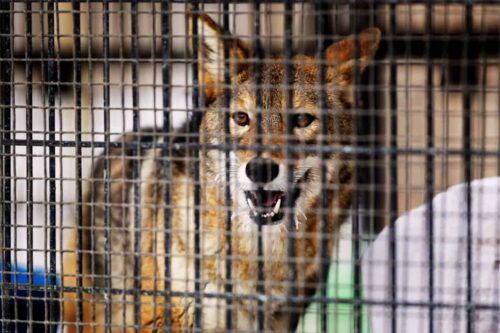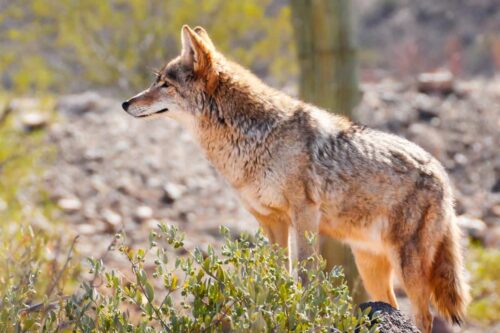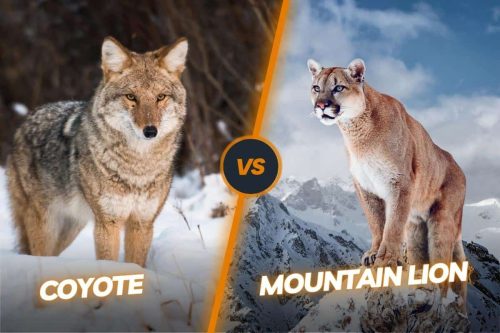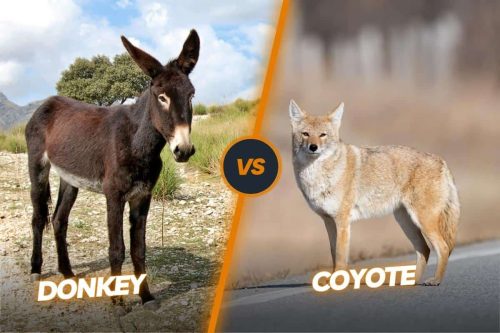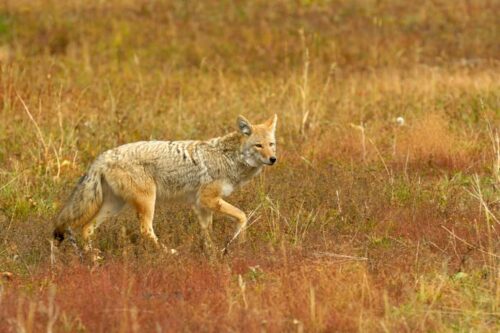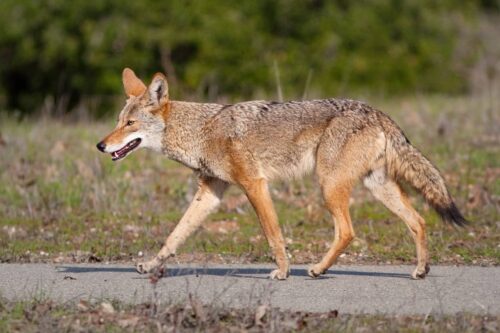Do Coyotes Hunt, Travel & Live in Packs? Exploring Coyote Packs
Coyotes are wild animals that belong to the canine family. They are the native animals of the North American continent. Coyotes show a lot of resemblance to wolves. That’s why some people also intermix them. Both of these animals actually belong to the same canine family. Coyotes are known for their many unique and rare capabilities in terms of hunting, traveling, and general lifestyle. There is a general perception about the coyotes that they get together very early for performing various kinds of activities. In this article, we are going to answer very important questions in detail do coyotes travel in packs, or do coyotes hunt in packs?
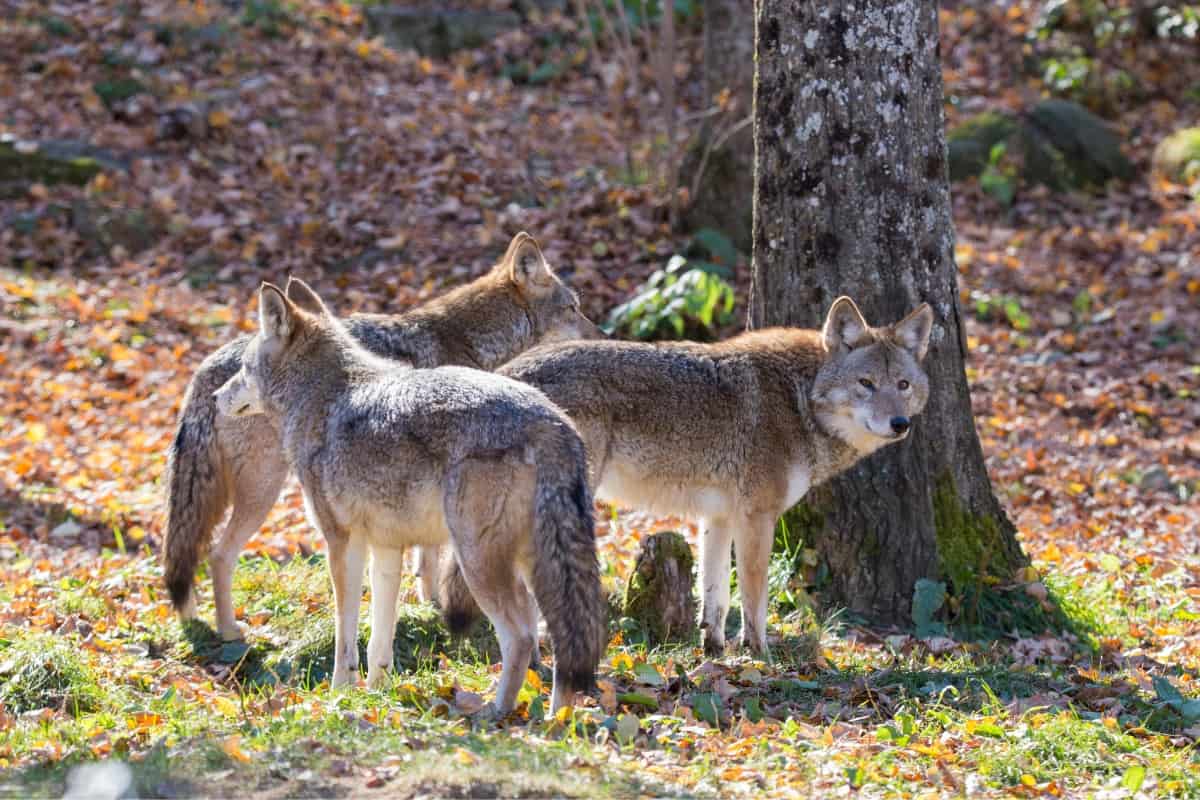
Contents
- Are Coyotes pack animals?
- What is a pack of coyotes?
- Why do animals hunt in packs?
- Do coyotes hunt in packs?
- Why do coyotes pack together?
- Why do coyotes hunt in packs?
- What is the pack size of the coyote?
- Do coyotes travel in packs?
- Do coyotes live in packs?
- What should you do if you see a pack of coyotes?
- When do coyotes kick out of the pack?
- Frequently asked questions
- Conclusion
Are Coyotes pack animals?
Yes, coyotes are very much pack animals which are gradually evolved through the family unit. Canines are actually all pack animals. They have an alpha pair in the form of mother and father. They produce children who are not allowed to mate with each other. You may see a lot of coyotes wandering individually but it doesn’t mean they could not live in packs.
What is a pack of coyotes?
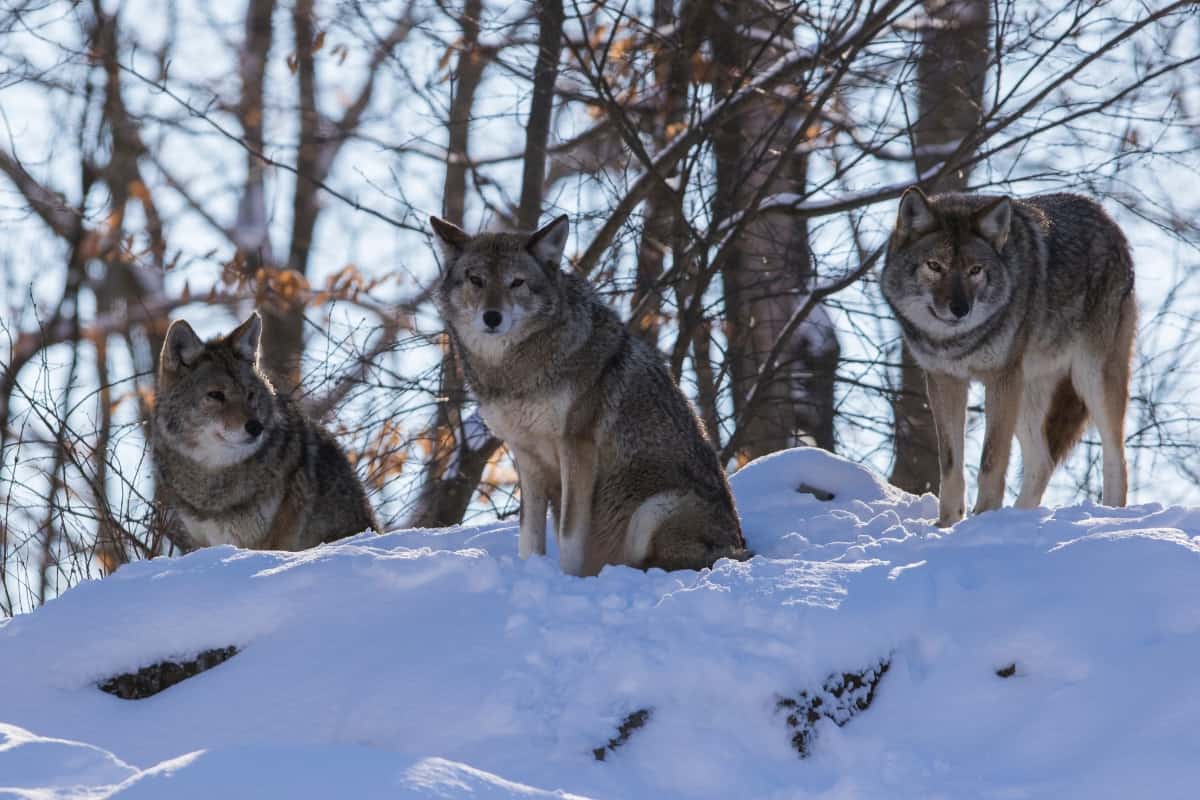
A pack of coyotes is actually a coyote family that has a proper head in the form of an alpha male and female. It includes new pups and previous year pups along with coyote members from other packs. The pack size depends upon the territory they need to cover and the food they need to collect for their sustenance. If they just rely on a natural diet then they need to cover more area. The pack size also matters very much when they need to defend their territory from their predators.
Why do animals hunt in packs?
It is important to answer this question first before talking specifically about a single animal like a coyote. All the activities and behavior are adopted by the wild animals on the basis of risk and reward associated with it. Sometimes, it is easy to target the prey and defend your territory without any outside help. Sometimes the risk is very high if you perform these activities on your own without any helping hand.
For instance, there are very well-known grazing animals like bison and llamas. They usually get together for herding purposes because it helps them spot the predators in the open fields as well as they can also find their own sources of food quite easily. In this way, they can also save a lot of their energy and share food sources with each other.
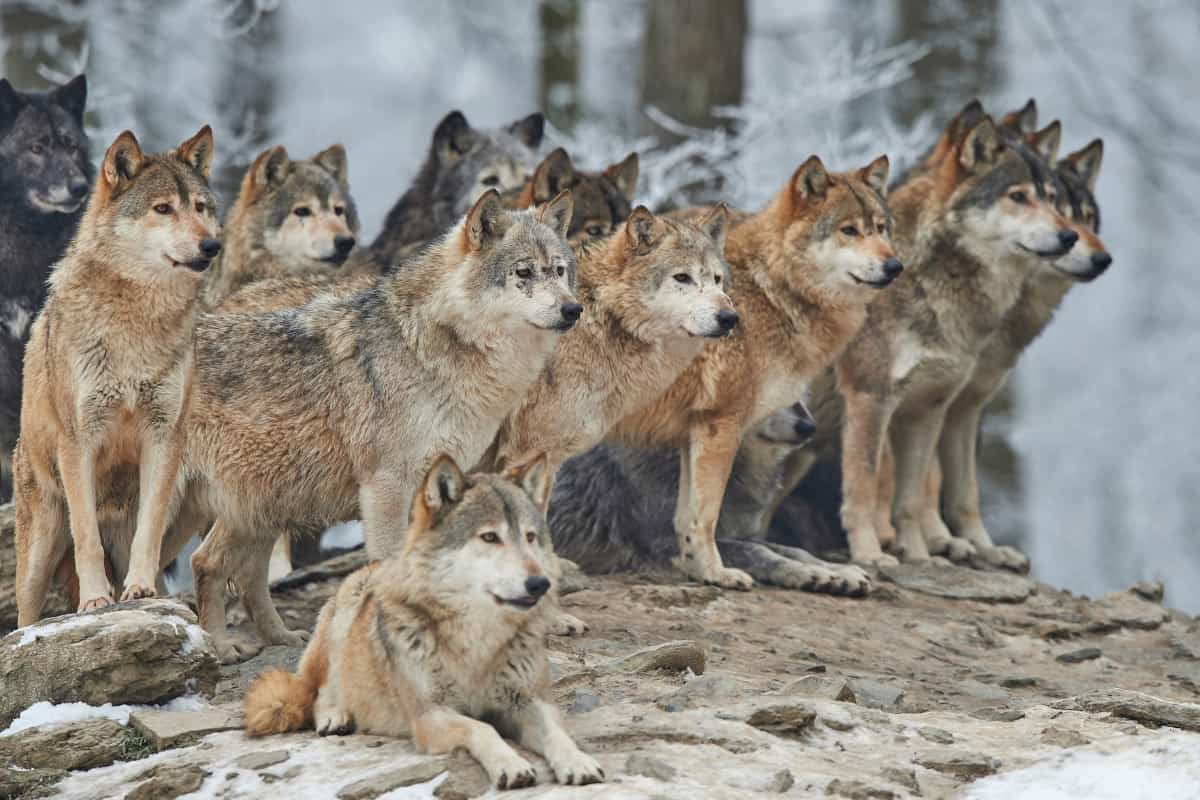
Moreover, wild animals also need to protect and maintain their territory from other animals. They also go in packs so that they can help each other in the protection of their territories and dens. Sometimes they also do a cost-benefit analysis before engaging in packs.
Sometimes wild animals can easily maintain their territory and fulfill their habitation and hunger. In this case, they don’t feel any need to go in packs. They are solitary animals and do most of their activities on their own. These solitary animals could not be declared anti-social as they also occasionally share and overlap their territories with other like-minded or female counterparts.
The biggest lure for hunting in packs comes if the targeted animals are big and dangerous enough that they cannot deal with it singlehandedly. Wolves are prime examples of hunting in packs. Wolves are actually highly sophisticated and patient animals as they can trail for weeks in search of the elk herd. They evaluate a lot of things like weather, terrain, and prey’s vulnerability before pouncing on them. That’s why wolves have been declared tactical hunters. They are also considered the most loyal and devoted family members.
Do coyotes hunt in packs?
Being opportunistic predators, coyotes are highly adaptable to various kinds of environments and habitats. They are also exceptionally good in terms of hunting prey and gathering food. Coyotes could also utilize garbage and pets as their source of food. It was proved when it was estimated that urban coyotes eat 25 % of human trash.
Despite having all these features, coyotes normally hunt in packs same like wolves. However, initially, they scatter and then gradually gather for hunting purposes. They like to hunt alone or with a partner but they get together very rapidly if they have to deal with large animals like deer.
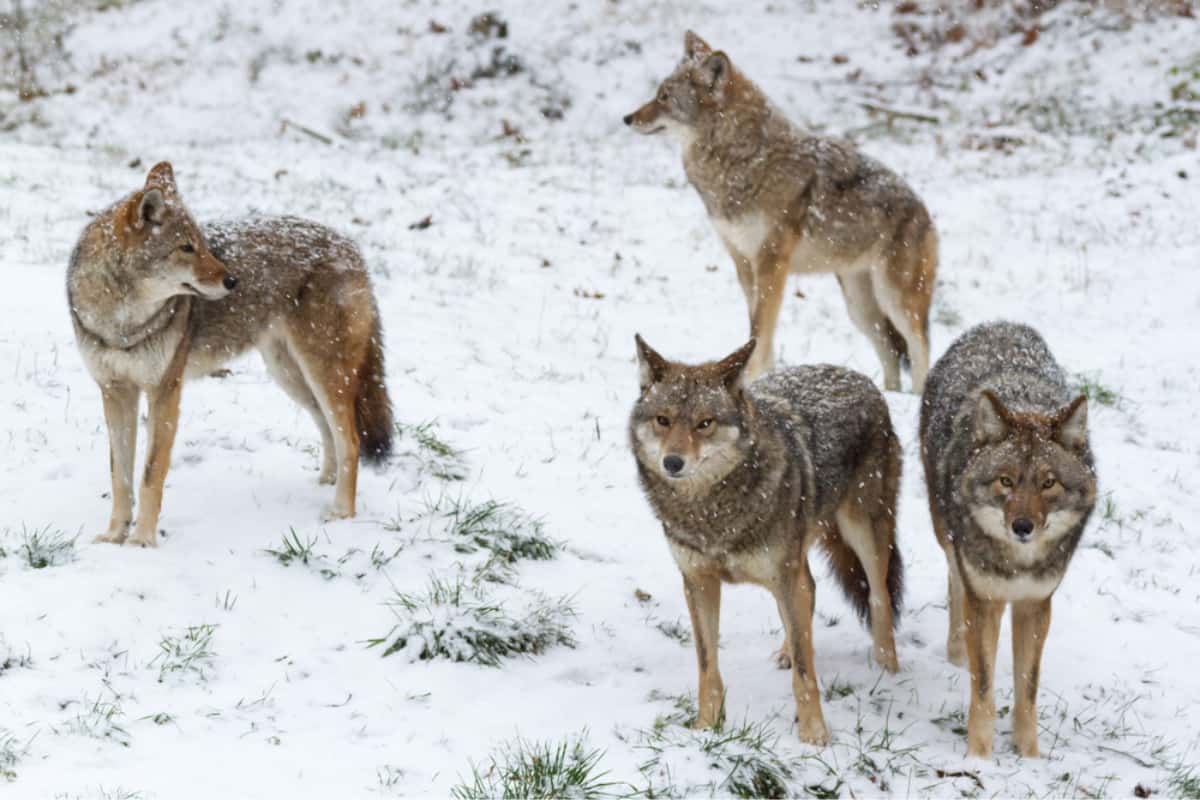
Sometimes they group together in such a way that they form a very stable pack. They also choose older coyotes in packs as their leader who gradually transfer their skills to the young coyotes. A stable pack is highly beneficial for everyone from pups to younger members to even older members.
Coyotes mainly prey on mice and are also capable of chasing and hunting down animals like snakes, rats, rabbits, and squirrels. Sometimes they also prey on birds like sparrows if there is a shortage of ground animals. Being omnivore animals, they also consume 10% fruits like berries and grasses in their diet.
Why do coyotes pack together?
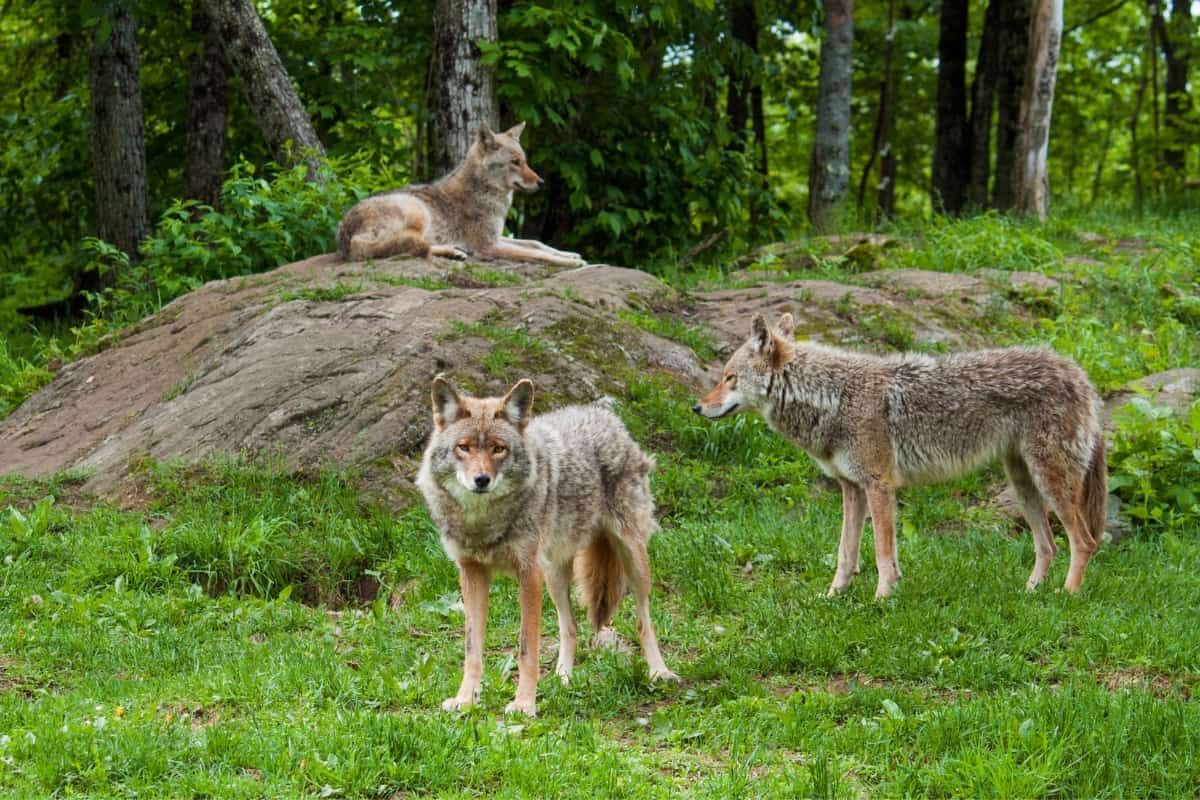
Coyotes pack together for several reasons. Nowadays, they are socializing and packing together a lot to maintain their vast population. These wild animals are being killed on a very large scale even with the support of the federal government but coyotes have been fully successful in maintaining a good population size. It only happens due to their highly sophisticated and social societal structure. They also pack together to protect or maintain their territory. By joining together, they can easily deal with many serious threats, especially from wild and dangerous animals like wolves.
Why do coyotes hunt in packs?
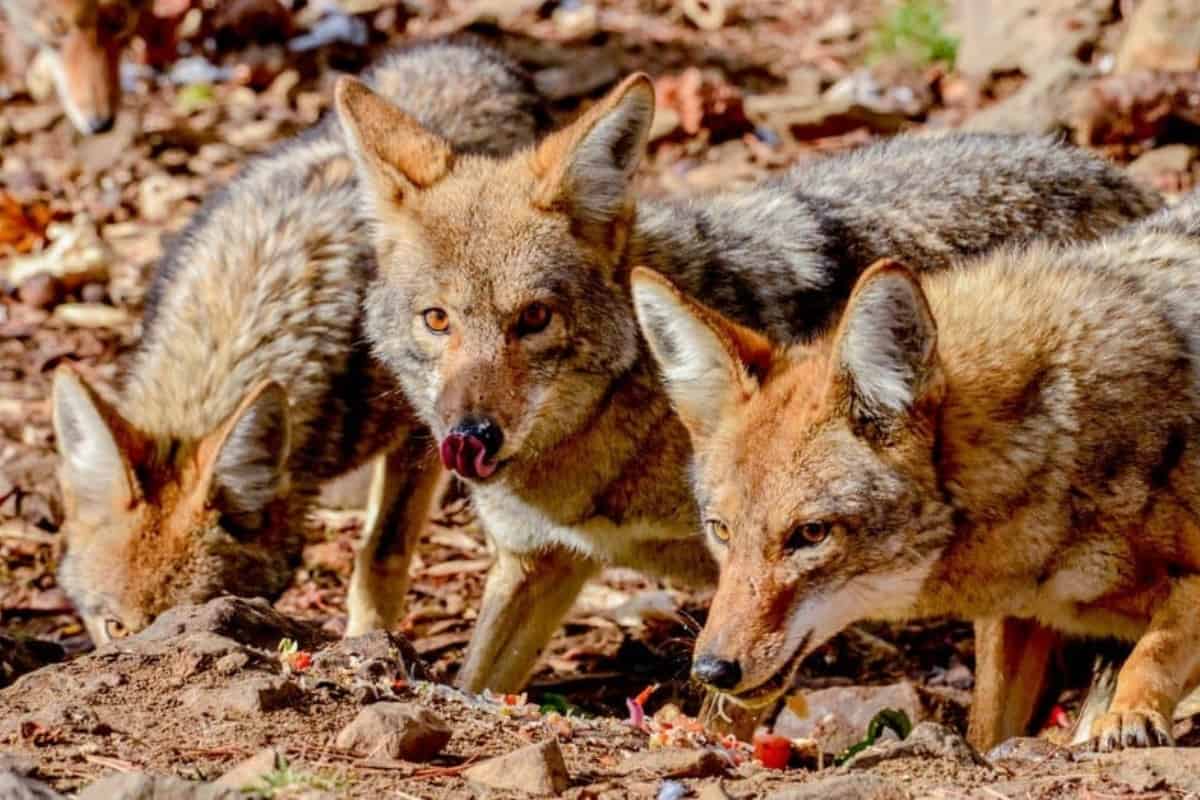
Coyotes hunt in packs for several fundamental reasons like easily spotting their prey, having a safe territory for building dens, and keeping themselves safe from predators. Generally, they have a very loose family structure and don’t live in packs. But they could easily group together for a lot of activities, especially hunting. Here we are going to give you a few basic reasons that will clear your confusion that why do coyotes hunt in packs.
For Dealing with large prey
One of the reasons behind hunting packs is they can easily tackle large prey. The white-tailed deer is the most common target in this regard. It might be difficult to take down large prey like deer single-handedly. That’s why they pack together to avoid any risks of injury and killing. In this way, coyotes could also target other animals like elk, wolves, etc. They adopt different tactics for dealing with these large prey. Generally, they chase it one by one until the prey tires out and give up. Sometimes they also lure these prey by standing coyotes in the way of these prey. They ambush their prey in the form of packs as soon as it reaches the baiting coyote.
For teaching pups
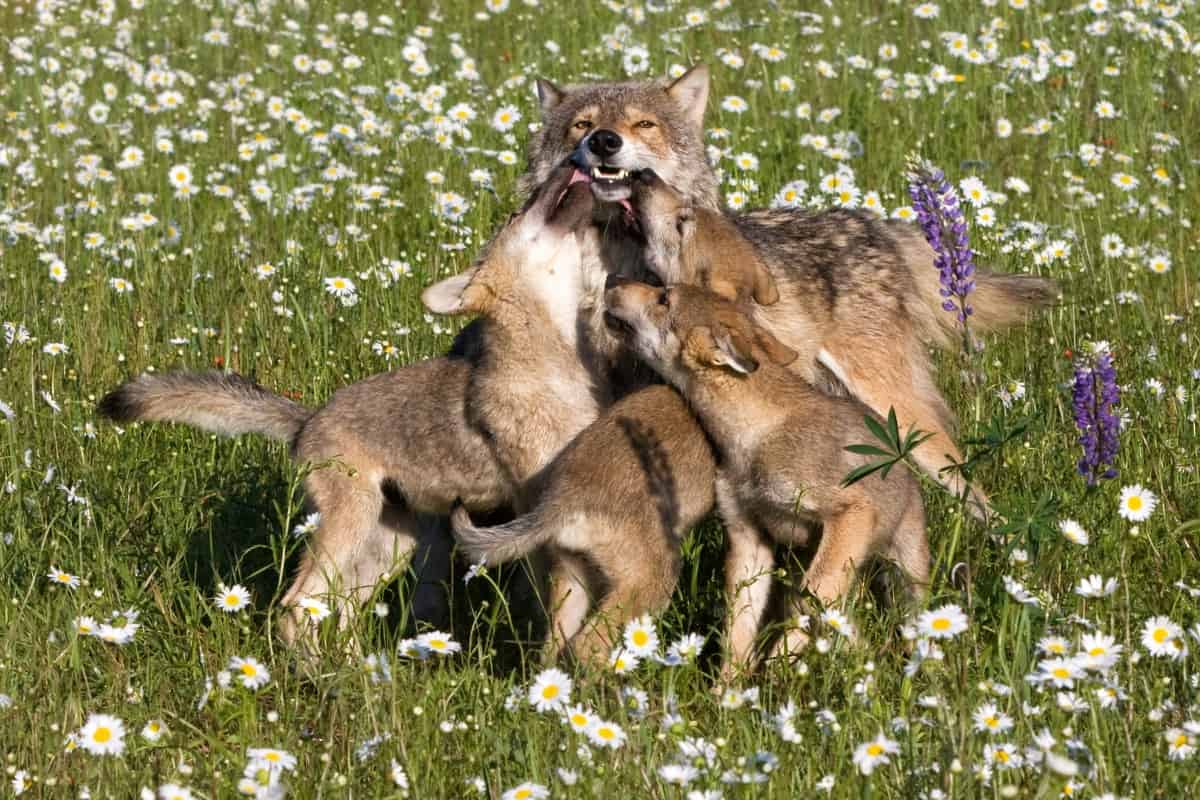
Coyotes usually mate between January and March and the pups come out in the early spring. Both male and female coyotes take care of their pups until after almost 35 days when they are weaned and come out to explore their own ways. In the first six months of life, coyotes learn all the skills from their parents. The litter size could be as big as 19 pups but on average there are only 5 to 7 pups they reproduce. When these pups come out with their parents for learning hunting skills then it seems like the whole pack is coming. In this training, they usually hunt small prey animals like mice, rabbits, squirrels, etc.
Higher success rate
Coyotes are actually considered very clever. That’s why they have their presence throughout the North American continent despite having a very high hunting and killing rate. Sometimes they hunt alone, sometimes in pairs, and sometime in the form of packs. They actually take the opportunity which suits them most. They will hunt alone when they know they can easily handle the prey and they will have plenty to eat alone. Moreover, they will form a group or pack if they know they have to cover a very vast area or if the prey is very larger and more dangerous.
Hunting with badgers
Sometimes coyote also group together with other animals like badgers for mutual benefit. They make a small hunting pack including two or three coyotes and one badger. It is a very rare phenomenon but it is beneficial for both the animals. As you know, coyotes come with exceptional hearing and smelling senses and easily locate the presence of prey. On the other hand, badgers are digging experts. Once the coyote locates the exact location of prey animals, badgers immediately dig it and flush out the prey animal. Thus, it is a win-win situation for both and also increases the hunting success rate of both of these animals.
What is the pack size of the coyote?
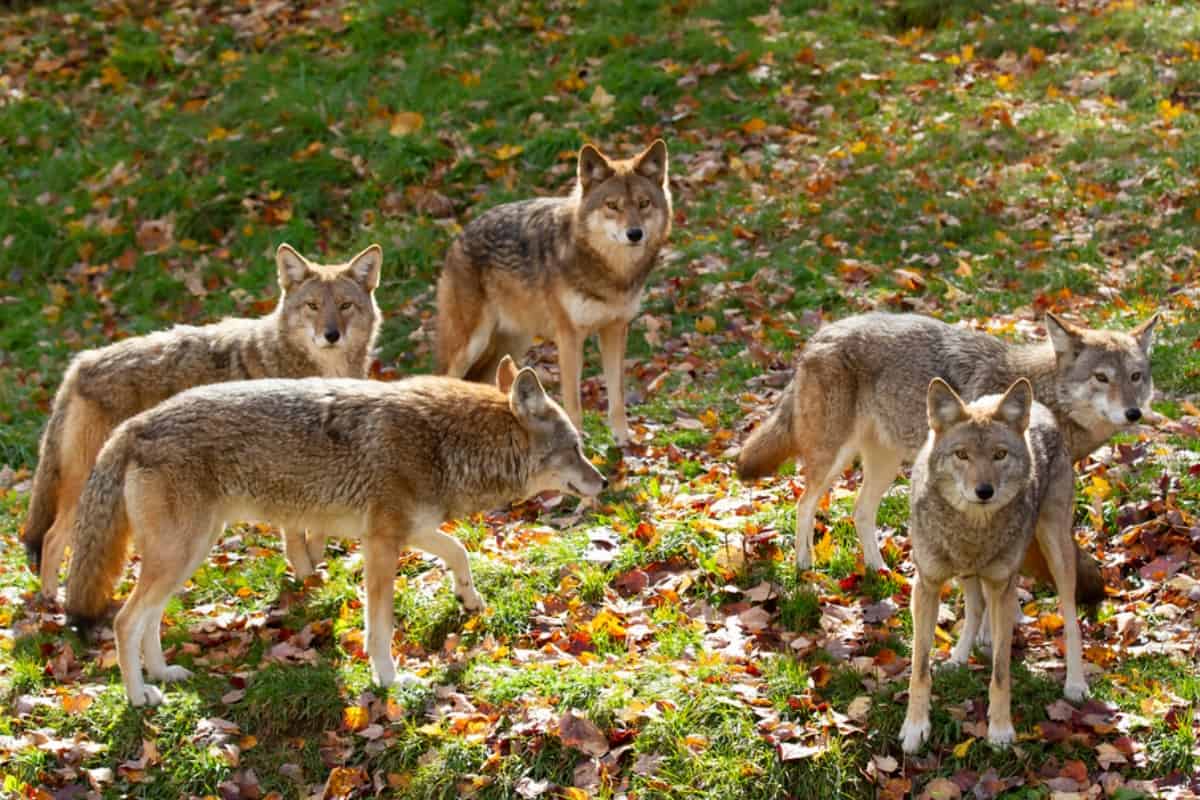
Pack size actually varies from situation to situation and resources of food availability anywhere. Packs do not necessarily include all the family members of a single family. They are actually coyotes who belong to different backgrounds. On average, you can witness 4 to 8 adult coyotes and 3 to 7 pups in the pack. Pups don’t participate in the hunting especially if they are hunting down some large prey unless the hunting is being done for the training of pups.
Do coyotes travel in packs?
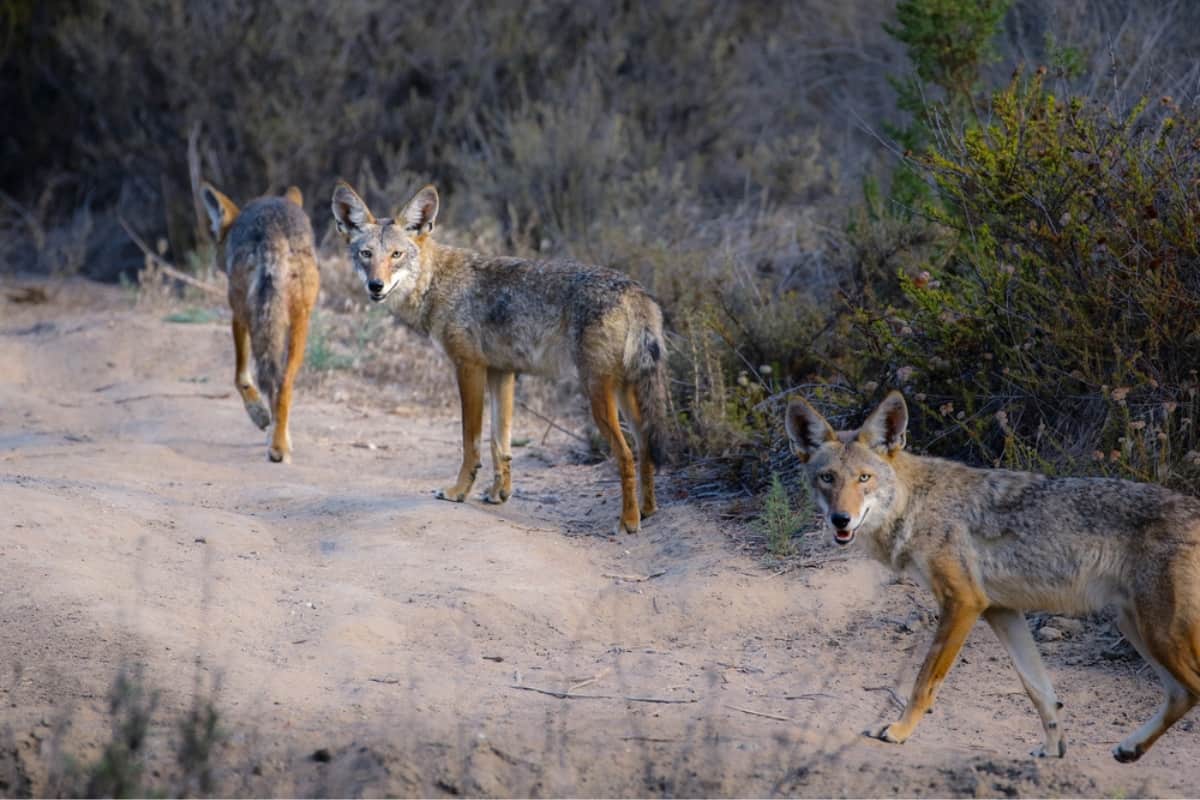
Yes, it is true that coyotes like to travel in packs. You may occasionally see 8 to 10 coyotes traveling in packs. Sometimes they are also divided into smaller subgroups and get together once they feel threatened. They mainly form and travel in these groups to keep the predators away from their packs.
How far do coyotes travel in packs?

The size of the coyote territory depends upon the size of their family. They have a very large territory if they have large family sizes. They also try to protect their territory as much as possible. You will also see coyotes being extra protective during the pup-rearing season. During this time of the year, they don’t let anyone cross their territory. It only happens in the spring season at one time of the year.
During other times of the year, they are not very protective and travel as away as possible from their territory. The home range of the coyotes lies between 5 to 10 miles. But they can travel up to 60 square miles away from their territory. They also travel in search of assembling packs with other animals. Coyotes could also go very far away in search of prey if there is a shortage of prey in their home range.
Do coyotes live in packs?
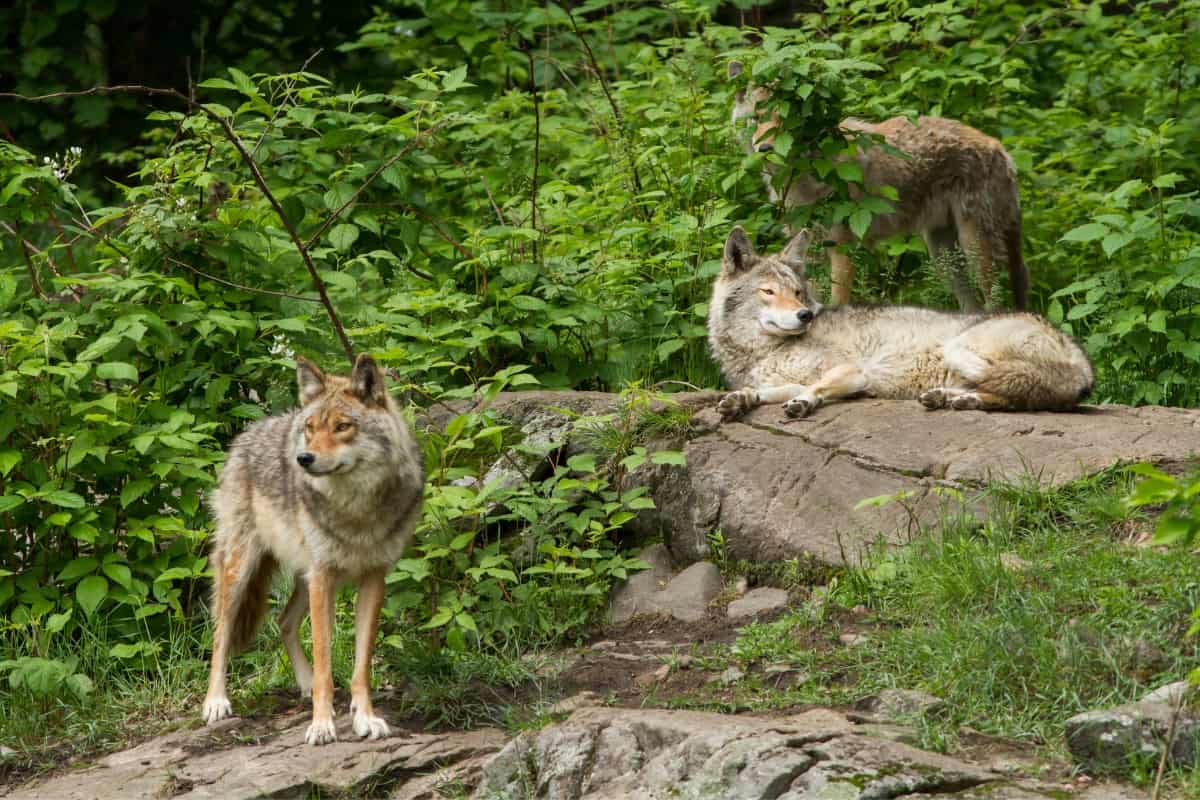
It cannot be said for all the coyotes as it varies from one situation to another. You may have seen the coyote live in packs. They form these groups for hunting together, defend their territories, or sometimes socialize with others. Some coyotes always live in packs. Most of them have solitary nature and like to live alone as much as possible until the need arises.
What should you do if you see a pack of coyotes?
If coyotes in a pack or a pack of coyote approaches you then you must immediately go somewhere safe and never try to approach them. You must take some shelter somewhere safe or in your nearby vehicle. Coyotes are wild animals and they could be dangerous or deadly for you or your pets or your kids. You should go away from the coyotes but never run away as it may threaten the coyote.
You may also throw some rocks or sticks toward them after reaching somewhere safe. You may also use repellent if you hear coyotes’ sounds like howling, growling, or barking. In this case, you may spray wolves’ urine in your tank yard. It is a good trick as coyotes don’t try to engage with wolves. These artificial urine and some other scents are easily available in the market.
When do coyotes kick out of the pack?
The coyote might be kicked out of the packs under various situations. Most probably coyote will be kicked out of the pack if it is sick, old, or severely injured. Coyote pups are also not allowed to join the pack for hunting purposes. When coyotes are kicked out of the pack then they live solitary life and there are very less chances of their survival for the long term in the wilderness. In this case, they try to preserve food as much as possible and don’t take any deadly risks.
Frequently asked questions
Conclusion
In a nutshell, we can say that the coyotes live and hunt in packs but the pack of coyotes is altogether different from the pack of wolves. The pack of coyotes usually consist of family members like alpha male and female and their offspring from the present and the previous year. They also form packs when they need to cover very vast territory and also when they have to deal with very large and dangerous animals. Sometimes coyotes also hunt together with other animals like badgers for efficient and perfect hunting. I hope this article helps you in answering this question that do coyotes hunt in packs or not?

Izzy is an experienced ranch worker who has a passion for exploring nature and getting up close to wildlife. With her connections to various animal organizations, Izzy is well-versed in animal care and rehabilitation.



